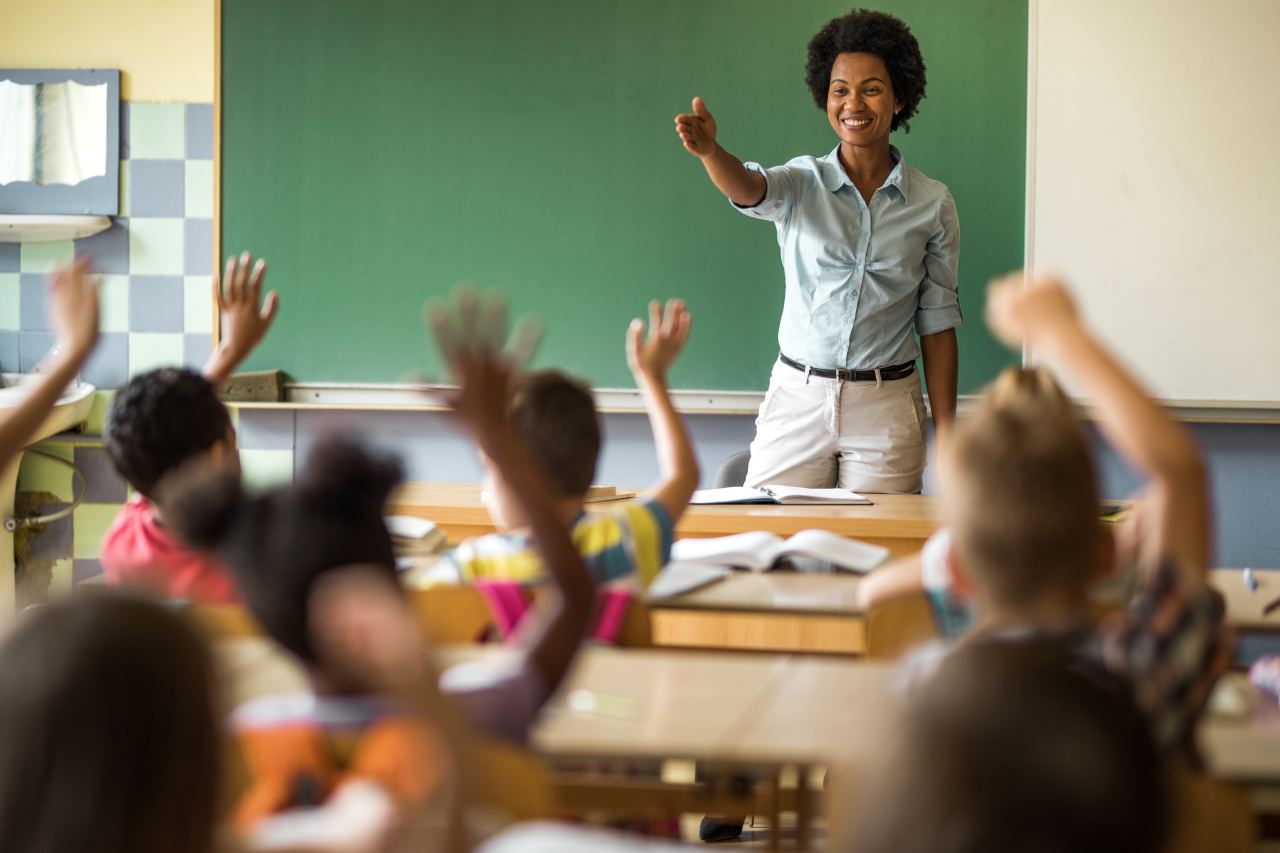Improve Your Child’s Performance with Primary Science Tuition Singapore
Improve Your Child’s Performance with Primary Science Tuition Singapore
Blog Article
A Comprehensive Guide to the Various Understanding Techniques in Main Scientific Research Guideline
The exploration of varied learning approaches in key science direction provides a chance for instructors to improve student involvement and comprehension significantly. By checking out hands-on discovering strategies, inquiry-based strategies, and joint approaches, we can determine efficient practices that provide to different discovering designs.

Hands-On Discovering Techniques
Hands-on discovering methods play a pivotal role in key scientific research guideline, engaging students in active expedition and trial and error. These techniques allow students to engage directly with sensations and materials, promoting a deeper understanding of scientific ideas. By utilizing manipulatives, designs, and real-life experiments, teachers produce an atmosphere where students can observe, hypothesize, and test their concepts.
Such strategies not just improve comprehension but likewise grow critical thinking and analytic abilities. When trainees take part in activities like building straightforward equipments, planting seeds, or conducting chain reactions, they are urged to ask concerns and seek solutions via their own monitorings. This experiential strategy assists to demystify intricate scientific principles, making them extra easily accessible and relatable.
Furthermore, hands-on learning advertises collaboration amongst peers, as trainees frequently function in groups to conduct experiments or share searchings for. This team effort not only enhances their knowing experience yet likewise develops necessary social skills. Inevitably, integrating hands-on techniques in main science guideline fosters a long-lasting love of learning and inquisitiveness regarding the environment, laying a strong structure for future scholastic pursuits in science and past.
Inquiry-Based Discovering
Inquiry-based discovering is a training strategy that urges students to ask inquiries, check out sensations, and construct their own understanding of scientific concepts. This technique changes the focus from typical teacher-led instruction to a more student-centered experience, where learners take the effort in their instructional journey. By fostering interest, inquiry-based understanding advertises deeper engagement with the material, enabling trainees to check out subjects in a meaningful context.
In practice, this approach commonly entails hands-on experiments, monitorings, and critical thinking activities that line up carefully with the scientific technique. Trainees are motivated to develop hypotheses, design investigations, and evaluate data, which cultivates important skills such as analytical and analytic thinking. The duty of the teacher in this framework is to promote expedition, leading pupils through the query process while urging independent idea and collaboration.
Furthermore, inquiry-based discovering nurtures a sense of possession over the discovering procedure, inspiring students to go after knowledge proactively. This technique not just boosts understanding of scientific ideas but likewise promotes a long-lasting love for understanding, outfitting students with the skills required to navigate a significantly intricate globe.
Collaborative Knowing Approaches
Collective discovering strategies encourage pupils to involve in purposeful interactions with peers, cultivating a common duty for their instructional end results. In main scientific research guideline, these methods encourage learners to collaborate to check out clinical principles, address troubles, and carry out experiments (primary science tuition Singapore). By taking part in team tasks, pupils can utilize varied viewpoints, enabling richer understanding and retention of scientific understanding
One trick aspect of collective discovering is the focus on interaction skills. Pupils have to verbalize their thoughts, listen actively to others, and negotiate concepts, every one of which are crucial proficiencies in both real-world and academic contexts. This social communication not just boosts their understanding of clinical principles however additionally advertises team effort and conflict resolution skills.
When students see the worth websites of their contributions within a group, they are extra likely to take possession of their learning site here journey. Overall, integrating joint learning techniques in primary science direction grows a dynamic discovering setting that prepares students for future academic and social difficulties.
Modern Technology Integration in Science
The assimilation of technology in main scientific research guideline enhances discovering experiences by supplying cutting-edge tools and resources that sustain numerous teaching methodologies, including collective discovering - primary science tuition Singapore. Using digital platforms, simulations, and interactive applications enables trainees to involve deeply with clinical principles, helping with a much more hands-on strategy to discovering
Online labs, for example, enable learners to conduct experiments safely and efficiently, promoting inquiry-based learning. These devices can simulate real-world scientific circumstances, permitting pupils to envision intricate procedures that would be hard to replicate in a conventional classroom setup. In addition, modern technology cultivates communication and collaboration amongst pupils, as they can share findings and function together on projects with on-line systems.
In addition, multimedia discussions and educational video clips can enhance lessons by satisfying varied knowing designs, making abstract ideas more obtainable. Data evaluation tools also equip students to accumulate and translate clinical information, reinforcing crucial believing abilities. On the whole, the tactical incorporation of technology in key scientific research guideline not just improves involvement however also visit this site right here prepares pupils for a technically advanced culture, equipping them with important abilities for future scientific undertakings.
Distinguished Direction Strategies
Distinguished guideline strategies are vital for resolving the diverse requirements of students in key science education. These techniques allow instructors to customize their teaching methods to suit varying abilities, rate of interests, and discovering designs within the class. By using set apart instruction, teachers can produce an inclusive atmosphere that promotes interaction and improves understanding of clinical ideas.
One efficient method is to utilize versatile grouping, which allows students to collaborate with peers at similar ability degrees or with varying point of views. This technique motivates peer discovering and promotes crucial thinking. Additionally, offering selections in tasks can equip trainees, allowing them to select tasks that reverberate with their rate of interests while still meeting curricular objectives.
In addition, including tiered projects is another valuable strategy. By making jobs with varying degrees of intricacy, teachers can guarantee that all pupils are properly challenged, no matter their efficiency. Utilizing developmental analyses to evaluate understanding more allows teachers to change their instructional approaches dynamically, making sure that each student obtains the support they require.
Inevitably, applying distinguished instruction strategies in key science education not only improves pupil knowing results but also cultivates an enthusiasm for scientific research, preparing pupils for future academic searches.

Conclusion
In recap, effective main science direction demands a diverse strategy that includes hands-on understanding, inquiry-based techniques, and joint techniques. The combination of modern technology and distinguished guideline further satisfies varied learning styles, cultivating an environment favorable to expedition and critical thinking. By carrying out these approaches, educators can boost student interaction and understanding, inevitably nurturing a lifelong passion for science and query. Such thorough methodologies are important for establishing notified and interested future researchers.
The exploration of varied understanding approaches in main science instruction offers a possibility for teachers to improve student involvement and understanding substantially.Hands-on knowing techniques play a pivotal duty in main science guideline, engaging students in energetic exploration and experimentation.Inquiry-based understanding is a training approach that urges trainees to ask questions, explore phenomena, and create their very own understanding of scientific principles.Collaborative understanding techniques empower trainees to engage in significant interactions with peers, cultivating a shared obligation for their educational results. Overall, including collaborative understanding methods in key science direction grows a dynamic discovering environment that prepares trainees for future scholastic and social challenges.
Report this page